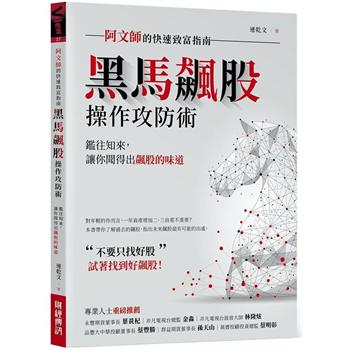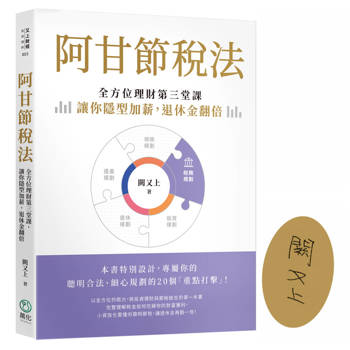是對於快速發展的內容繁雜的量子輸運領域的綜合性介紹。量子輸運在納米器件中糅合了很多看似互相矛盾的概念,如量子與經典、導電性與絕緣性等等。作者在書中提供了寬廣的理論背景和奠定該領域基礎的開創性的實驗。
本書適合納米科學、納米技術領域的研究人員作為參考,也可用作研究生教材。
| FindBook |
|
有 1 項符合
納扎羅夫的圖書 |
 |
$ 527 | 量子輸運:納米科學導論(影印版)英文
作者:(荷)納扎羅夫 出版社:北京大學出版社 出版日期:2014-08-01 語言:簡體中文 規格:581頁 / 普通級/ 1-1  看圖書介紹 看圖書介紹
|
|
|
圖書介紹 - 資料來源:博客來 評分:
圖書名稱:量子輸運:納米科學導論(影印版)英文
內容簡介
目錄
Preface page vii
Introduction 1
1 Scattering 7
1.1 Wave properties of electrons 7
1.2 Quantum contacts 17
1.3 Scattering matrix and the Landauer formula 29
1.4 Counting electrons 41
1.5 Multi—terminal circuits 49
1.6 Quantum interference 63
1.7 Time—dependent transport 81
1.8 Andreev scattering 98
1.9 Spin—dependent scattering 114
2 Classical and semiclassical transport 124
2.1 Disorder, averaging, and Ohm’’s law 125
2.2 Electron transport in solids 130
2.3 Semiclassical coherent transport 137
2.4 Current conservation and Kirchhoff rules 155
2.5 Reservoirs, nodes, and connectors 165
2.6 Ohm’’s law for transmission distribution 175
2.7 Spin transport 187
2.8 Circuit theory of superconductivity 193
2.9 Full counting statistics 205
3 Coulomb blockade 211
3.1 Charge quantization and charging energy 212
3.2 Single—electron transfers 223
3.3 Single—electron transport and manipulation 237
3.4 Co—tunneling 248
3.5 Macroscopic quantum mechanics 264
3.6 Josephson arrays 278
3.7 Superconducting islands beyond the Josephson limit 287
4 Randomness and interference 299
4.1 Random matrices 299
4.2 Energy—level statistics 309
4.3 Statistics of transmission eigenvalues 324
4.4 Interference corrections 336
4.5 Strong localization 363
5 Qubits and quantum dots 374
5.1 Quantum computers 375
5.2 Quantum goodies 386
5.3 Quantum manipulation 397
5.4 Quantum dots 406
5.5 Charge qubits 427
5.6 Phase and flux qubits 436
5.7 Spin qubits 445
6 Interaction, relaxation, and decoherence 457
6.1 Quantization of electric excitations 458
6.2 Dissipative quantum mechanics 470
6.3 Tunneling in an electromagnetic environment 487
6.4 Electrons moving in an environment 499
6.5 Weak interaction 513
6.6 Fermionic environment 523
6.7 Relaxation and decoherence of qubits 538
6.8 Relaxation and dephasing of electrons 549
Appendix A Survival kit for advanced quantum mechanics 562
Appendix B Survival kit for superconductivity 566
Appendix C Unit conversion 569
References 570
Index 577
Introduction 1
1 Scattering 7
1.1 Wave properties of electrons 7
1.2 Quantum contacts 17
1.3 Scattering matrix and the Landauer formula 29
1.4 Counting electrons 41
1.5 Multi—terminal circuits 49
1.6 Quantum interference 63
1.7 Time—dependent transport 81
1.8 Andreev scattering 98
1.9 Spin—dependent scattering 114
2 Classical and semiclassical transport 124
2.1 Disorder, averaging, and Ohm’’s law 125
2.2 Electron transport in solids 130
2.3 Semiclassical coherent transport 137
2.4 Current conservation and Kirchhoff rules 155
2.5 Reservoirs, nodes, and connectors 165
2.6 Ohm’’s law for transmission distribution 175
2.7 Spin transport 187
2.8 Circuit theory of superconductivity 193
2.9 Full counting statistics 205
3 Coulomb blockade 211
3.1 Charge quantization and charging energy 212
3.2 Single—electron transfers 223
3.3 Single—electron transport and manipulation 237
3.4 Co—tunneling 248
3.5 Macroscopic quantum mechanics 264
3.6 Josephson arrays 278
3.7 Superconducting islands beyond the Josephson limit 287
4 Randomness and interference 299
4.1 Random matrices 299
4.2 Energy—level statistics 309
4.3 Statistics of transmission eigenvalues 324
4.4 Interference corrections 336
4.5 Strong localization 363
5 Qubits and quantum dots 374
5.1 Quantum computers 375
5.2 Quantum goodies 386
5.3 Quantum manipulation 397
5.4 Quantum dots 406
5.5 Charge qubits 427
5.6 Phase and flux qubits 436
5.7 Spin qubits 445
6 Interaction, relaxation, and decoherence 457
6.1 Quantization of electric excitations 458
6.2 Dissipative quantum mechanics 470
6.3 Tunneling in an electromagnetic environment 487
6.4 Electrons moving in an environment 499
6.5 Weak interaction 513
6.6 Fermionic environment 523
6.7 Relaxation and decoherence of qubits 538
6.8 Relaxation and dephasing of electrons 549
Appendix A Survival kit for advanced quantum mechanics 562
Appendix B Survival kit for superconductivity 566
Appendix C Unit conversion 569
References 570
Index 577
|











